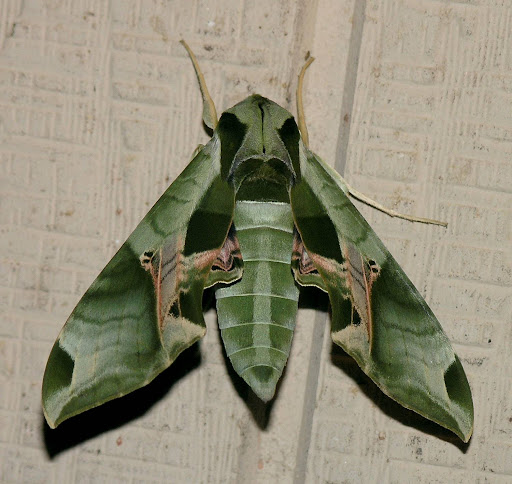 Judging by it's size (only about 1 1/2 inches/4cm) and markings, I'd guess that this Cecropia Moth caterpillar (Hyalophora cecropia) is in its third instar. It grows through five instars, shedding its skin between each stage. It will grow to over 4 inches/10 cm before spinning a cocoon where it will overwinter before emerging as a moth. Caterpillars feed on leaves of various trees and shrubs including alder, apple, ash, beech, birch, box-elder, cherry, dogwood, elm, gooseberry, maple, plum, poplar, white oak, willow. This particular one was feeding on wild plum.
(Wormspit has photos of every stage of development from eggs through moth.)
Judging by it's size (only about 1 1/2 inches/4cm) and markings, I'd guess that this Cecropia Moth caterpillar (Hyalophora cecropia) is in its third instar. It grows through five instars, shedding its skin between each stage. It will grow to over 4 inches/10 cm before spinning a cocoon where it will overwinter before emerging as a moth. Caterpillars feed on leaves of various trees and shrubs including alder, apple, ash, beech, birch, box-elder, cherry, dogwood, elm, gooseberry, maple, plum, poplar, white oak, willow. This particular one was feeding on wild plum.
(Wormspit has photos of every stage of development from eggs through moth.)
 With its nearly six inch (15cm) wingspan, Cecropia Moths are the largest moths native to North America. Like all Giant Silkmoths (Saturniinae), Cecropia has a brief lifespan as an adult moth -- only a matter of days. It does not feed, but only finds a mate, breeds, lays eggs if a female and dies. (My previous post on these moths has more species details and links.)
(Photo credit for both photos belongs to Jo. She took the caterpillar shot on 7/13/09 and the moth was taken on 5/29/08.)
With its nearly six inch (15cm) wingspan, Cecropia Moths are the largest moths native to North America. Like all Giant Silkmoths (Saturniinae), Cecropia has a brief lifespan as an adult moth -- only a matter of days. It does not feed, but only finds a mate, breeds, lays eggs if a female and dies. (My previous post on these moths has more species details and links.)
(Photo credit for both photos belongs to Jo. She took the caterpillar shot on 7/13/09 and the moth was taken on 5/29/08.)
.

Cecropia Moth Caterpillar (Hyalophora cecropia)










